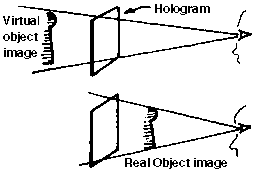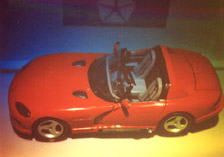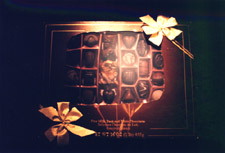
As the following list reveals, there are many ways to categorize holograms
For one, you can group holograms by their method of illumination. In this respect, there are two basic types of holograms. The "white light reflection," or "reflection," hologram can be viewed with a white spotlight as if it were a painting. The "transmission" hologram requires a light source (sometimes a laser) from behind. In addition, there are numerous hybrids that combine many different techniques to serve particular functions.
Inside, Outside, (Upside Down?)
Holograms are also distinguished by the apparent location of their image. The image produced by a hologram can either appear to be in front of the holographic plate or film, or behind the film. In the former case it is called a real image (projection) and the latter a virtual image. If you imagine your position as viewer to be constant then you can easily determine whether an image is real or virtual. If the image appears between you and the hologram it is a real image, if the hologram is between you and the apparent object then it is called a virtual image.

Picture, Series of Pictures, or Movie
Holograms are further broken up into categories based on how many images of the original object are coded into the hologram.
Check out this rotating demo.
Monochromatic vs. Color Holograms:
Since holograms have traditionally been produced using monochromatic laser light, the images themselves have been primarily monochromatic. The only color in such holograms was the result of light picking up the natural colors of the film, often silver with red or green highlights.

However, in 1994, experimenters at Lake Forest University began creating full color holograms. According to their website, Lake Forest College is the only place in the country to produce these full-color holograms, but we havenÕt been able to discover how they have managed to captured color.


Check out more full color holograms:
Why Holograms?
Aside from just being cool-looking, holograms now serve useful purposes in many places: on credit cards to discourage counterfeiting, on magazine covers to present three-dimensional images, in checkout counters to scan the bar codes, in art galleries to exhibit multicolor concepts, in laboratories to perform nondestructive testing, in precision measurements, in aircraft to allow pilots to read instruments without taking their eyes off the target, and even in electronic circuits and computer-generated optical elements to perform difficult and otherwise impossible functions.
|
| ||
BACK |
|
NEXT |